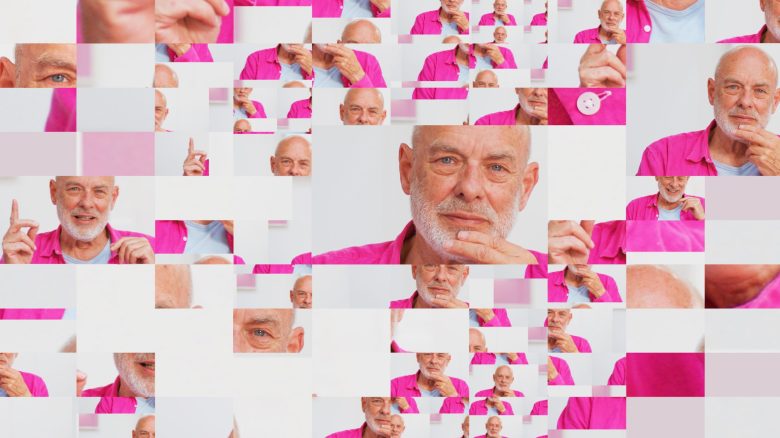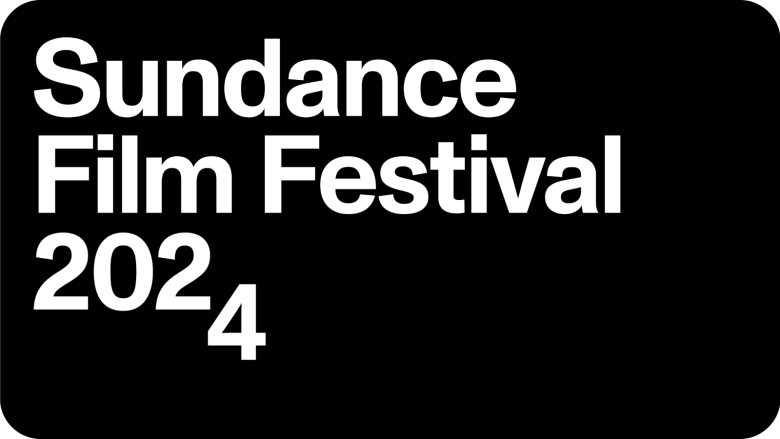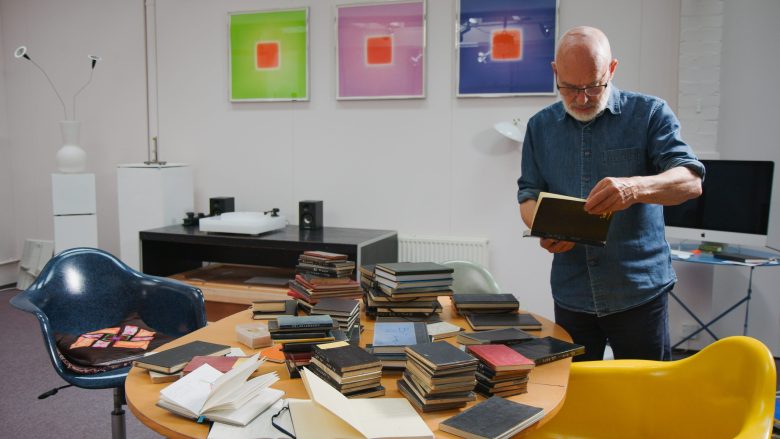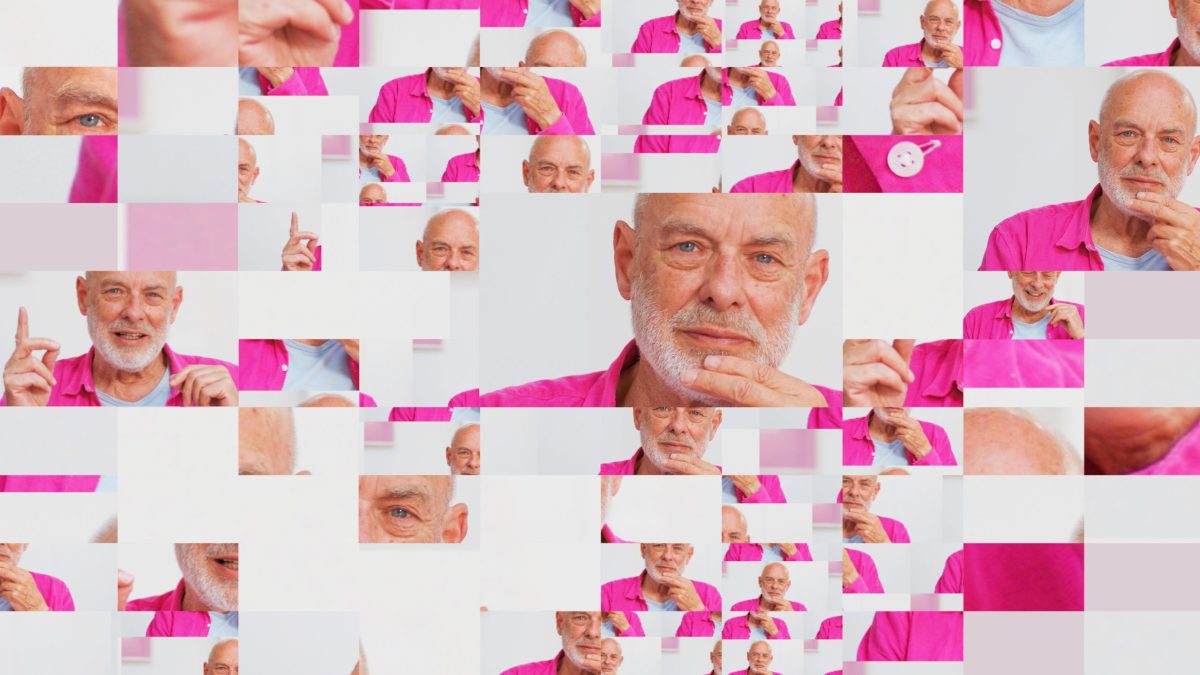
Filmmaker Gary Hustwit’s documentary, “ENO,” about musician and producer Brian Eno, is kind of like experiencing a live theatrical play.
The story is the same, but each viewing will be different.
The concept was made into a reality using a new type of generative software, and the film premiered through the 2024 Sundance Film Festival’s New Frontier category, Hustwit said.
“Each time we press a button, a new film that is completely different comes out,” he said. “(The program) also creates its own transitions between the scenes and so on. So, each version of the film is for the audience in the room, and no one will ever see that version again.”
“ENO” started like other documentaries, where the filmmaker, in this case Hustwit and his crew, filmed and interviewed their subject.
“We ended up spending three years with Brian, as well as digging through his archives, which was about 500 hours of footage from 40 years ago,” Hustwit said. “Most of that has never been seen before, and Brian didn’t even remember seeing it.”
The filmmaker and his editors — Maya Tippett and Marley McDonald — would edit their footage and find interesting things in Eno’s archives.
“Sometimes we let them be on their own as scenes or we would combine our new footage with the archives,” Hustwit said. “So, we would get dozens and dozens of scenes together.”
The generative software system that Hustwit and programmer Brendan Dawes built would select different scenes and determine where to put them in the sequence.
“It’s like an intelligent assembler system,” Hustwit said. “It assembles footage we’ve crafted or found and put together.”
Hustwit liked the idea of using a different process to make this film.
“Normally filmmakers are control freaks about what scene comes after which scene,” he said. “This is more like creating a structure where the film can piece itself together. By doing that, it’s unique every time. It’s still interesting any way you slice it.”

The process and result turns the idea of what a documentary is on its head.
“In a lot of documentaries you think you need to be chronological,” Hustwit said. “You think you need to have this fact before this fact, but in a lot of the documentaries I like, it doesn’t matter if you learn a fact about a person at the beginning of the film, at the end of the film or two-thirds of the way in. As the viewer, you watch it and make the connections yourself.”
Hustwit believes a film can become more engaging if the viewer has to do a little work.
“I like it when you have to connect the dots versus someone telling you how to feel or think about this person or subject in the film,” he said.
Using generative programs is also organic to Eno’s own creative process, Hustwit said.
“He’s been using generative software in his music making since the early days of computers,” he said. “I have footage of him from 1996 having a press conference showing early computer programs that were making music and randomizing things. And he has always been excited about new technology and new tools and how they can integrate them in his practice.”
So creating a generative film about Eno was a natural move, Hustwit said.
“It would have been stupid to do a normal biodoc about Brian, and he would never have agreed to it,” he said with a laugh. “He’s turned down documentary film inquiries for years because it’s just the same old thing. I think the idea of doing a generative film was an intriguing idea to him.”
Pitching the idea of a generative film to Sundance was also a natural thing to do, Hustwit said.
“I just told them it was a generative documentary about a very innovative artist who has an incredible body of work,” he said. “We showed them early combinations of scenes and the work we were doing as we were finishing the software and the editing. And they loved the idea of doing something different.”
Not only is “ENO” an exercise of finding a different way to make a film. It’s also a different way to watch a film and opens up a different way to review a film, according to Hustwit.
“So it’s disrupting three parts of the film industry, or at least suggesting different possibilities in these three areas,” he said. “It’s been interesting seeing the response from audiences, other filmmakers and writers. And I’m interested in the possible futures that these things suggest.”

To assess the possibilities of this type of filmmaking is why Hustwit wanted to premier “ENO” at Sundance.
“We are able to put this idea out, and get all of this feedback from audiences and filmmakers that will help us figure out what these technologies can do and how to use this stuff in a responsible and creator-focused way,” he said.
There are many valid concerns, especially when artificial-intelligent models are based on scraping the web and stealing images, video or text that have been made by other creatives, Hustwit said.
“That’s not what we’re doing,” he said. “We created a very specific generative system, based on our intelligence that works only with our footage. It is groundbreaking work. I’m excited how people have responded to it, and I’m excited to get other filmmakers to use this new technology.”
In addition to premiering “ENO” at Sundance, Hustwit is pleased that the film is part of the festival’s New Frontier category, which focuses on experimental film and the intersection of art and digital media.
“If you look at New Frontier, it has always been ahead of the curve,” Hustwit said. “It’s interesting to see how quickly mainstream culture, the film industry and the tech industry ends up catching up to what it first puts out — whether it was the beginnings of VR to more creative ways to use AI and generative tech in film projects.”
While “ENO” is currently being enjoyed in many different variations during Sundance, Hustwit and Dawes are working on ways to stream the film.
“We can have a film that is different every day or a film that is different in certain parts of the country, or we can do something where every city gets its own version,” Hustwit said. “The highest use of this idea is that every person who streams the film will see their unique version of the film that will never been seen by anyone else in the world. That’s doable, but not something streaming systems can do right now. So we’re developing that architecture.”

